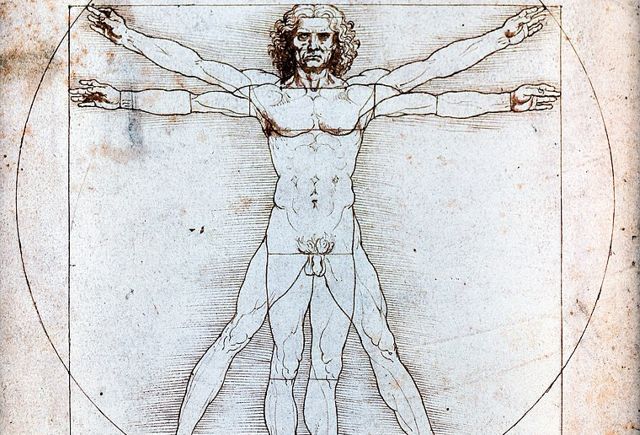
The Vitruvian Man, by Leonardo da Vinci
Originating from the Latin word aureus , the term aureus is used to describe that which is made of gold or that is similar to this metal . The adjective is also used in reference to gold .
Example Sentences
The use of the concept usually appears in poetic language. For example: “The sunset gave us a wonderful golden landscape” , “When entering the senator's house, I was struck by a golden vase of enormous dimensions located next to the door” , “The golden dress helped highlight her silhouette and gave her an air of distinction.”
as a noun
The word aureus also refers to a gold coin that circulated in the Roman Empire . The aureus was issued between the 1st century BC and the 4th century AD. C. , having dimensions equal to those of the denarius. One aureus, in terms of its value , was equivalent to twenty-five silver denarii.
in mathematics
The idea of the golden ratio , on the other hand, appears in the field of mathematics and in the field of astronomy . In the first case, it is an irrational number that is represented by the Greek letter fi . Other names by which this concept is known are God's number , golden ratio , golden ratio and divine proportion , to name just a few.
The golden number ( 1.618033… ) has no period and has infinite decimals. It has various mathematical properties that make it special, as well as being present in numerous geometric proportions in nature . Outside of purely scientific issues, the golden ratio provides a certain aesthetic to objects that maintain this proportion. There are even those who attribute a mystical nature to it.
Specifically, the golden ratio reflects a relationship between two line segments . Leonardo Da Vinci used this proportion to draw his famous Vitruvian Man , for example. It is believed that other artists and architects resorted to this concept for the design of their works, however, many of these statements have not been proven with documents from the authors themselves, so they remain in the realm of speculation.
Let's briefly define irrational numbers : these are values that cannot be expressed using a fraction a / b , in which both the numerator and the denominator are integers and the second is different from zero. In other words, they are numbers that cannot be expressed exactly in decimal form. An example is the square root of 7, which begins as follows: 2.64575131106459…
astronomical golden ratio
Astronomers, finally, call the golden number the position of a specific year in the Meton cycle , which repeats every nineteen years and makes it possible for the cycles of the sun to coincide with the cycles of the moon , although with a margin of maximum error of two hours. The golden numbers of astronomy range from 1 to 19.

The golden ratio indicates the position of a year in the metonic cycle.
Meton of Athens was the astronomer who discovered the cycle that bears his name, and presented it in the year 432 BC. C. in the context of the Olympic Games. The response was very positive, and the Metonic cycle was engraved in gold (hence the name "golden") in the temple of Minerva. As we mentioned above, this calculation is not perfect; In fact, there are proposals to improve it, and even to completely reformulate it.
To calculate it, you must follow these three steps:
* divide the year by 19 and round down the decimals to obtain a whole result;
* multiply said value by 19 and subtract this new result from the initial year;
* add 1 to the latter to obtain the golden number of the year.
